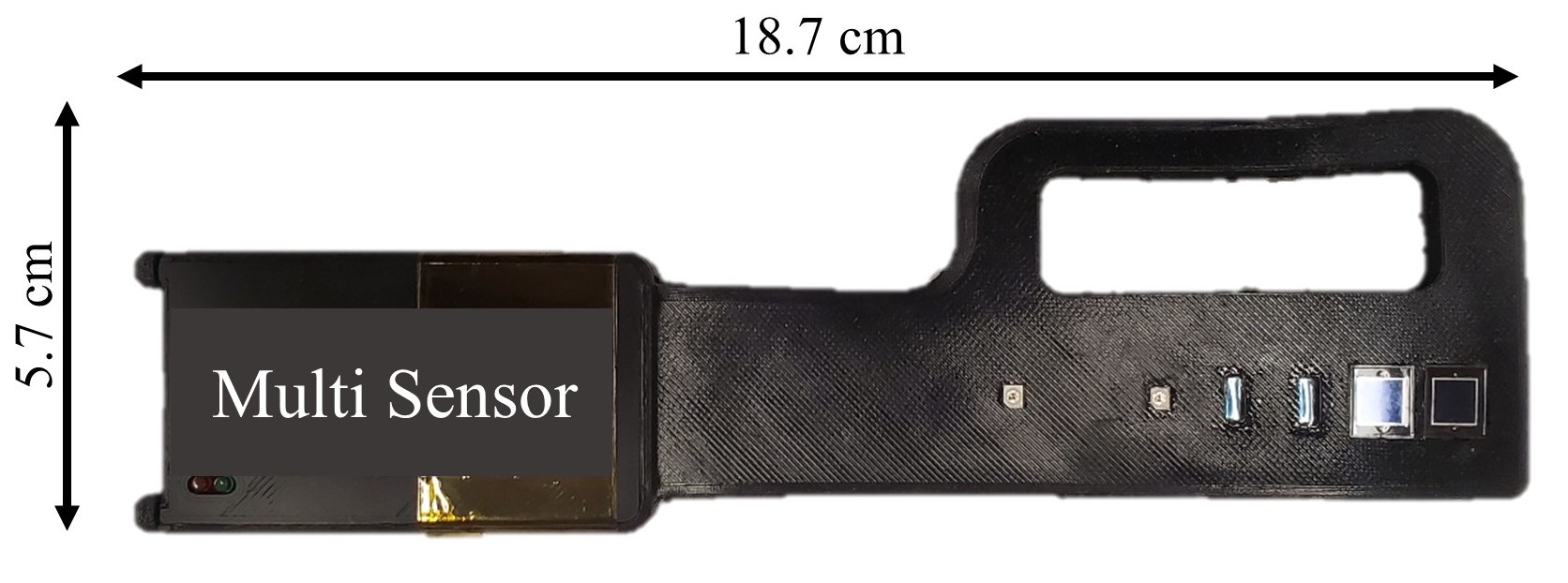Prototype includes sensors for monitoring maternal vital signs and fetal movements

Researchers at the National Institutes of Health have refined a wearable device that monitors placental oxygen levels—pairing it with sensors that monitor a pregnant woman’s breathing, heart rate, and uterine contractions, along with fetal movements. The investigators found that low placental oxygen levels measured by the device correlated with maternal conditions, placental complications, and newborn complications in 29 pregnancies. The wearable device, which relies on near-infrared light to detect blood oxygen levels, has the potential to identify at-risk pregnancies so that medical interventions can be offered in a timely manner.
The study was conducted by Thien Nguyen, Ph.D., and Amir Gandjbakhche, Ph.D., of the Section on Translational Biophotonics at the Eunice Kennedy Shriver National Institute of Child Health and Human Development (NICHD), and their colleagues. It appears in Biosensors.
Background
Low oxygen levels in the maternal circulation or failure of the placenta to supply enough oxygen can reduce fetal growth and impair fetal development. Doppler ultrasound is helpful for assessing blood flow through the placenta but does not measure blood oxygen levels. Moreover, its accuracy is reduced by fetal movement. Another placental monitoring technique, functional magnetic resonance imaging, is expensive, not widely available, and affected by uterine contractions, fetal movement, and higher maternal body mass index.
In a preliminary study, the NIH authors tested a wearable sensor that used near-infrared light to obtain placental oxygen levels from 12 pregnant women in the third trimester. The findings suggested that lower placental oxygen levels were associated with complicated pregnancies.

The wearable device the researchers developed monitors placental oxygen levels and the pregnant woman’s breathing, heart rate, and uterine contractions, along with fetal movements.
Credit: Thien Nguyen, Ph.D., NICHD Section on Translational Biophotonics
Results
For the current study, the authors upgraded the sensor, adding the capacity to detect heart rate, breathing rate, fetal movements, and uterine contractions. With the upgraded sensor, they evaluated the placentas of 17 additional patients and combined the results with those from the original study.
Pregnancies without complications had placental oxygenation levels averaging 76 percent. Among pregnancies with high blood pressure and asthma, placental oxygenation levels averaged 69.5 percent. For pregnancies with placental inflammation and other placental conditions, placental oxygenation averaged 69.4 percent. For conditions affecting the mother, such as pregnancy-associated high blood pressure, placental oxygenation averaged 69.5 percent, and for conditions affecting the newborn, such as rapid breathing, placental oxygenation averaged 68 percent.
The researchers explained that while the prototype offers advantages over other methods for observing the placenta, it can monitor oxygen levels only in lateral placentas—those growing on the right or left wall of the uterus. They added that having a lateral placenta is associated with a higher risk for preterm birth and gestational diabetes.
Significance
The upgraded wearable device for placental monitoring has the potential to detect placental complications of pregnancy early so that interventions can be offered to prevent adverse pregnancy outcomes. More research is needed to further refine the device before it can be used in medical practice.
Reference
Nguyen, T, et al. A wireless and wearable multimodal sensor to non-invasively monitor transabdominal placental oxygen saturation and maternal physiological signals. Biosensors. 2024.

 BACK TO TOP
BACK TO TOP